Renowned Nationwide for Both Weaving and Dyeing
Honoring Tradition While Embracing Innovation
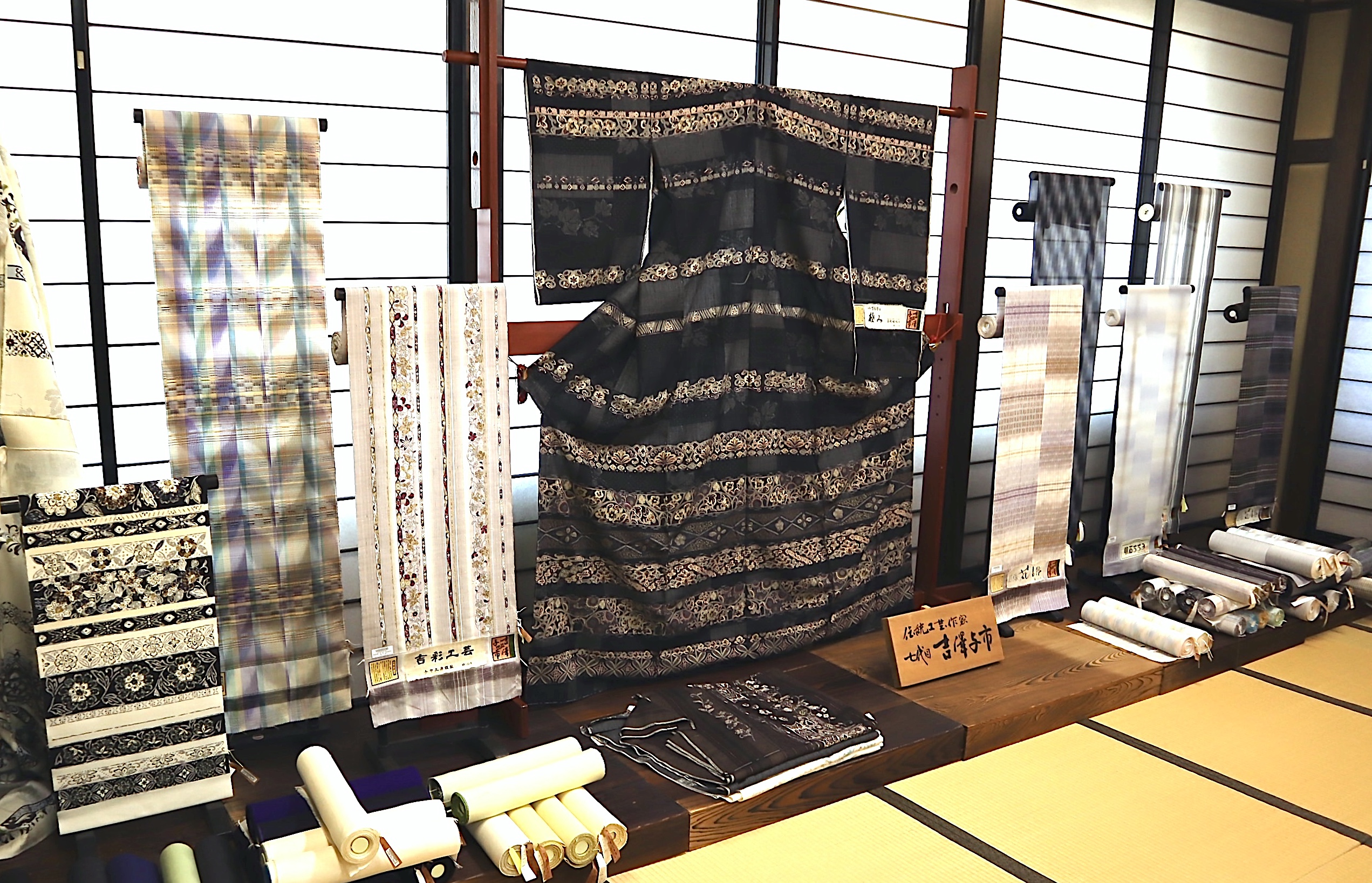
Located in Niigata Prefecture, Tokamachi is a historic textile region known for Tokamachi Akashi Chijimi. With a history of over 1,500 years, it is nestled in one of Japan’s heaviest snowfall areas—an inland basin rich in moisture, making it an ideal environment for textile production.As described in Hokuetsu Seppu (Snow Stories of North Echigo), a late-Edo period book that vividly captures life in the snowy land of Uonuma:This refers to Echigo chijimi, a finely woven ramie fabric known for its crisp texture and cooling feel—made possible by the region’s snow, water, and humidity.
“Spinning threads in the snow, weaving in the snow, rinsing with snowmelt, and bleaching on the snow.
Where there is snow, there is chijimi. Thus, Echigo chijimi owes its name to both snow and human spirit.
The snow of Uonuma is the very parent of chijimi.”
Indeed, the renowned textiles of Tokamachi were born through the blessings of snow.
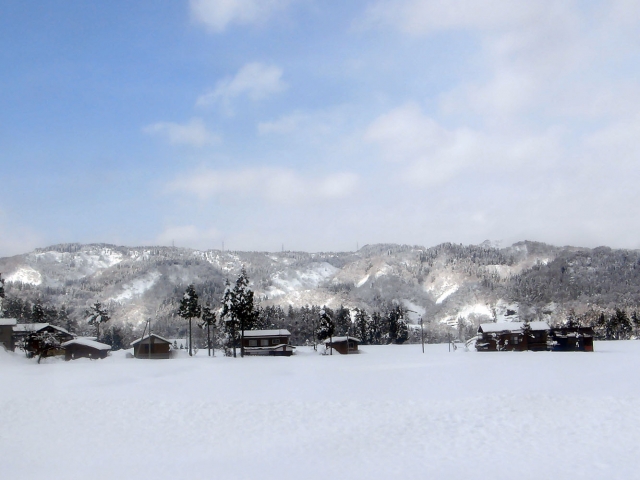
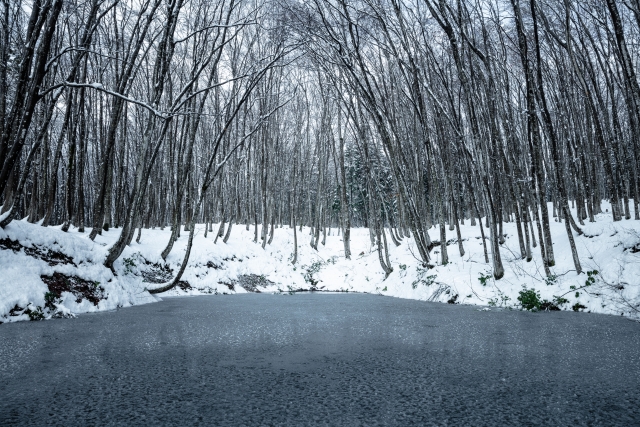
This edition of The House of Heritage features Yoshizawa Orimono, a prestigious weaving house with over 270 years of family tradition in Tokamachi. The company continues to lead Japan’s kimono industry as a rare manufacturer that excels in both weaving and dyeing. At the Tokamachi Kimono Festa, Yoshizawa’s Tokamachi Yuzen Furisode have earned the Minister of Economy, Trade and Industry Award for seven consecutive years—testament to their exceptional craftsmanship.
In This Article:
- A 270-year lineage rooted in Echigo-chijimi tradition
- How Niigata’s snowy climate shaped Tokamachi’s textile culture
- The dual mastery of weaving and dyeing that redefined tradition
- The enduring philosophy of “Fueki Ryuko” — constancy and change
- Passing the spirit of craftsmanship to the next generation
Preserving and Innovating Tokamachi’s Weaving Legacy
While Yoshizawa Orimono was formally established in 1897, the Yoshizawa family’s roots in textile production go back much further. Since the Hōreki era of the mid-Edo period (1751–1764), the family had been engaged in the making of Echigo chijimi—a traditional ramie fabric known as a specialty of the Echigo region. Under the second-generation head, Mr. Yoichi Yoshizawa, the production of Echigo chijimi flourished, setting the foundation for the company’s future growth. Today, the name “Seventh-Generation Yoichi Yoshizawa” represents the house’s signature brand, often seen in kimono boutiques across Japan. The current president, Mr. Takehiko Yoshizawa, is the eighth-generation successor, continuing the family’s mission to carry forward the Tokamachi weaving tradition while embracing innovation.
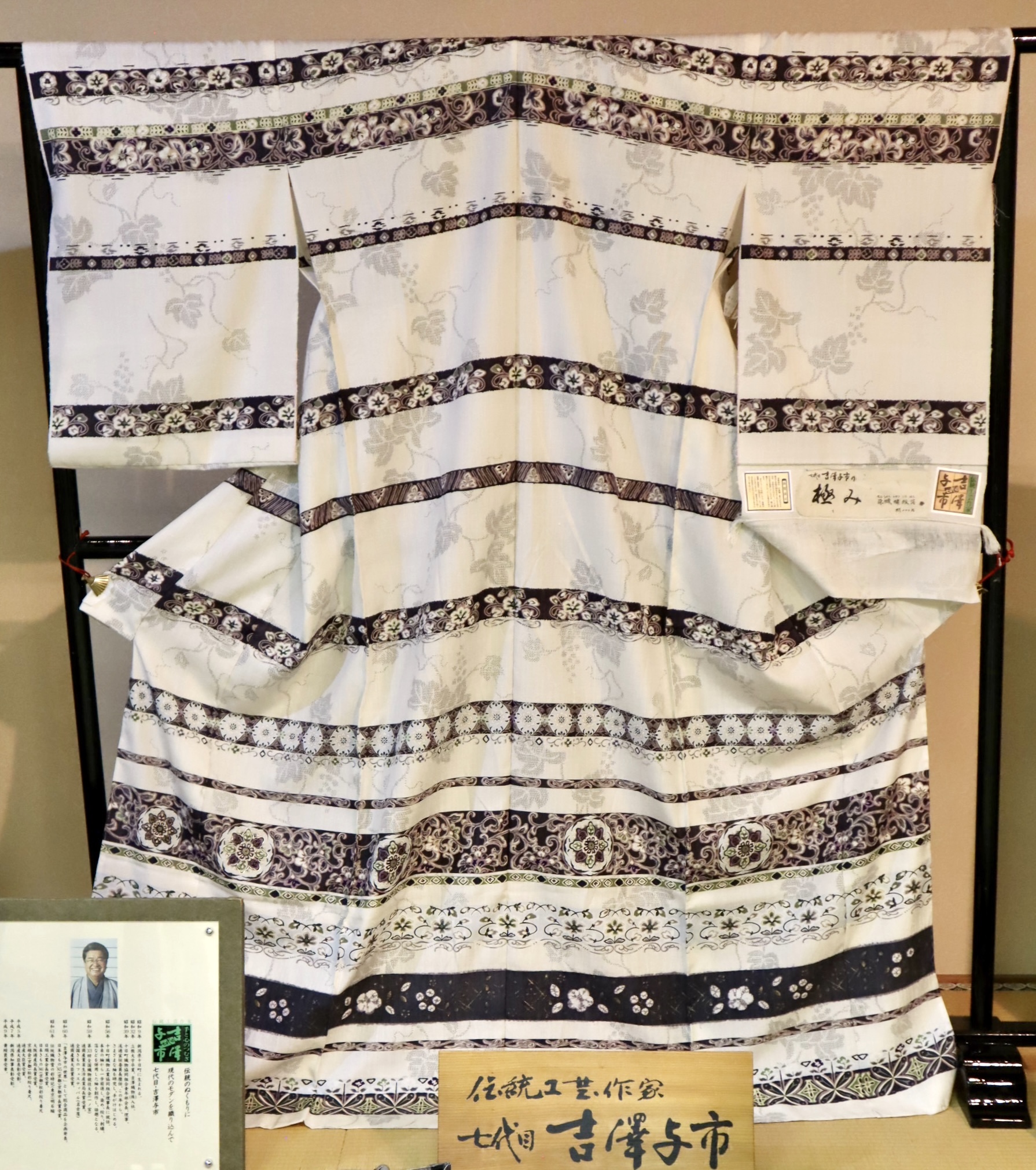
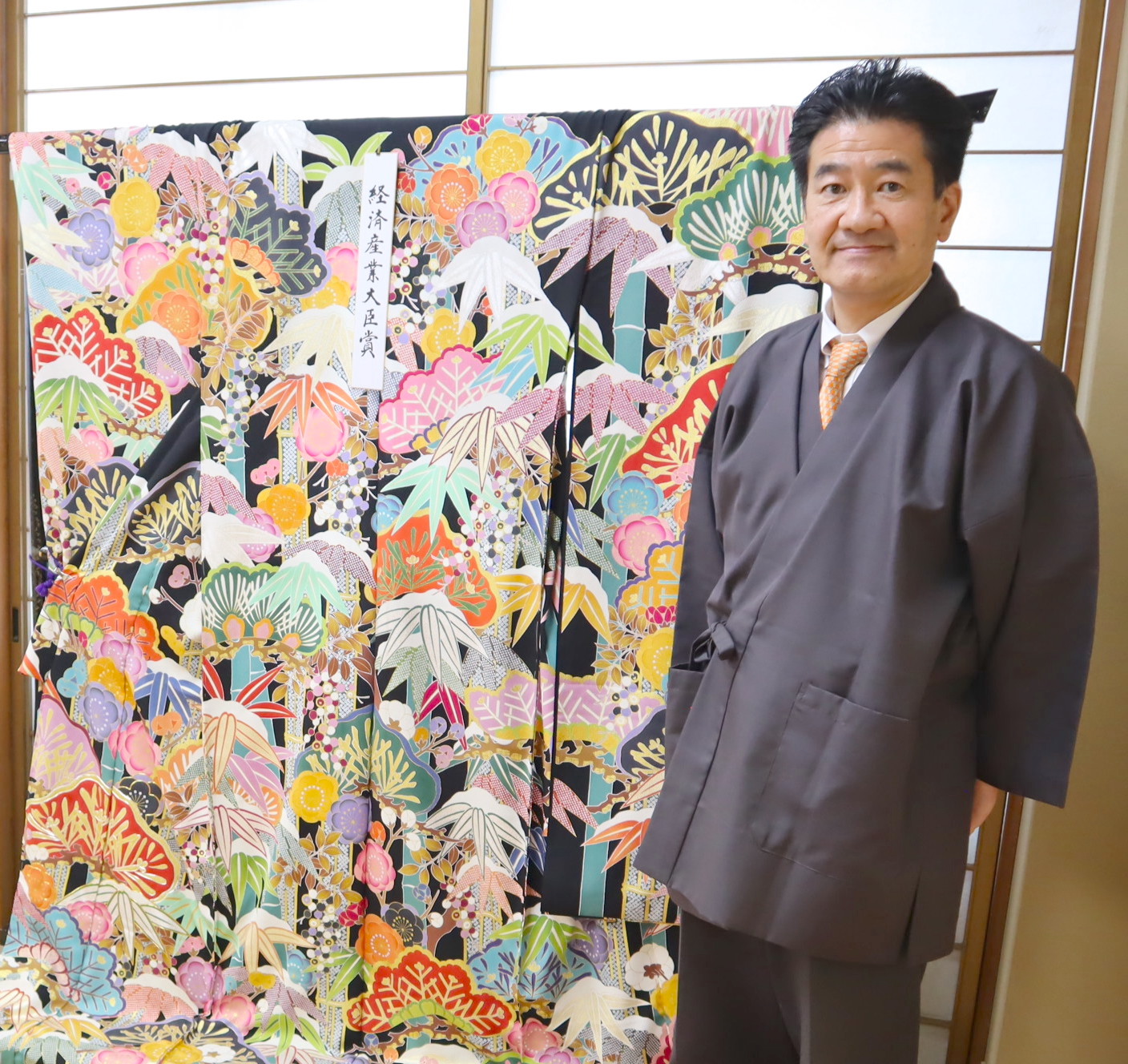
The foundation of Yoshizawa Orimono’s legacy lies in the development of Tokamachi Akashi Chijimi. Praised in old songs for being “so comfortable you’ll never want to take it off” and likened to “the wings of a cicada” for its delicate texture, this summer kimono is beloved for its cool, airy feel. As its name suggests, Akashi chijimi originated in the Akashi region of Hyogo Prefecture, passed through Kyoto’s Nishijin, and eventually reached Tokamachi. Around 1887, a fabric wholesaler from Kashiwazaki in Niigata—who dealt in Echigo chijimi—believed that Tokamachi, with its higher humidity than Nishijin and mastery of tightly twisted yarn techniques, would be ideal for weaving this fabric. He brought back fabric samples and shared them with local weaving houses and artisans. It took 30 years of dedicated research, but by around 1917, the fabric was finally commercialized. Further improvements such as steam-shrinking and waterproof finishing followed, and by 1934, Tokamachi Akashi Chijimi had earned its place as a refined summer kimono fabric known nationwide.
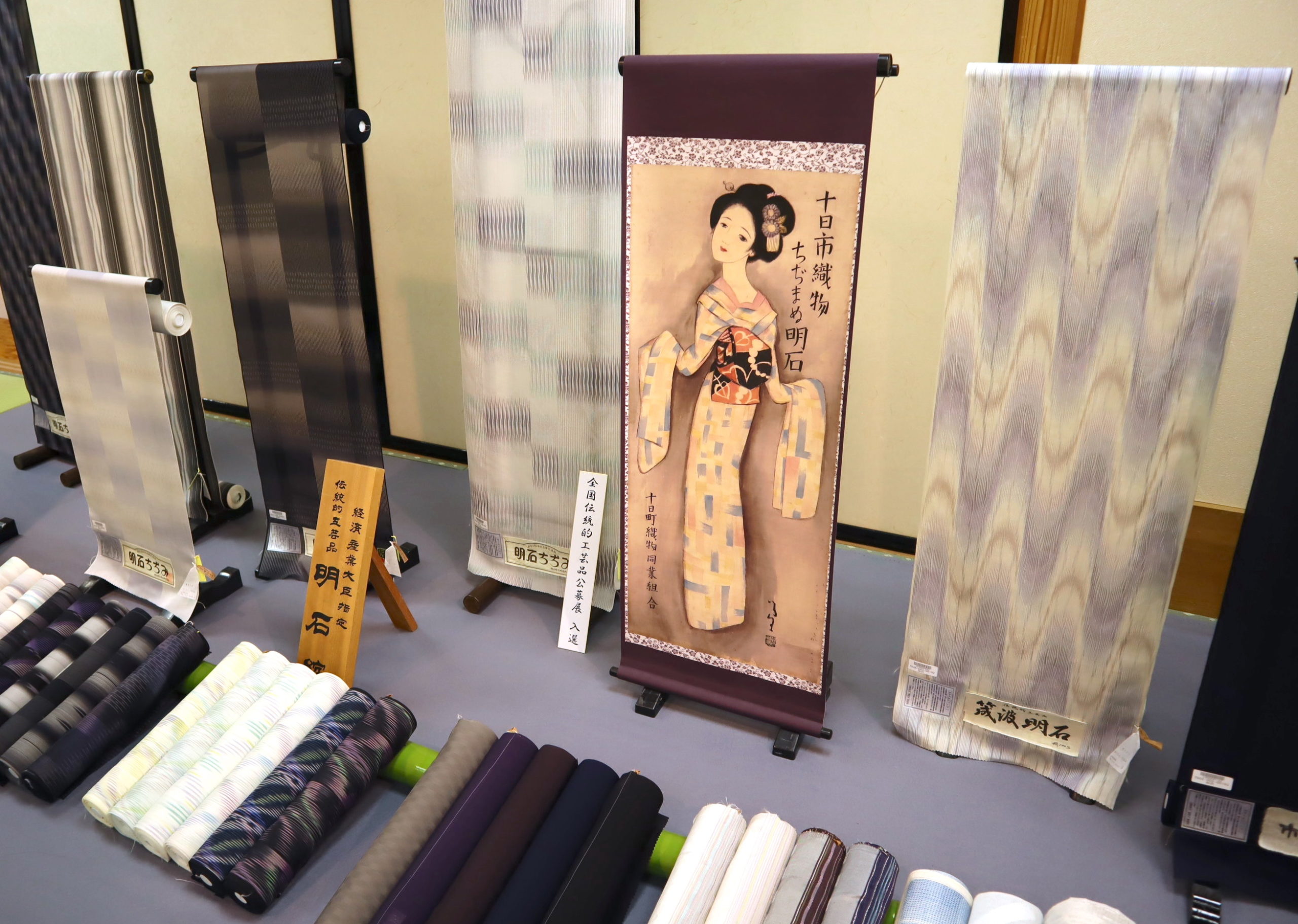

While Tokamachi Akashi Chijimi became a flagship product of the region’s textile industry, its seasonal nature—being a summer kimono—meant that weaving was limited to the winter months. This led Yoshizawa Orimono to begin researching year-round products.
Quick Thinking Sparked a Hit:
The Rise of the Black Haori
In 1963, the seventh-generation head of the company (now its chairman) introduced a groundbreaking product that shook the kimono industry. It was a black haori (kimono jacket) that would go on to sell over 1.1 million pieces and remain a bestseller for two decades. The inspiration behind this hit came from an unexpected mishap. At the time, brightly colored haori were in fashion, and Yoshizawa Orimono was actively developing such products. However, a technical issue during warping (preparing the warp threads) caused faint streaks and uneven dyeing on the fabric. In a bold move to salvage the product, the fabric was dyed black to conceal the color irregularities and tailored into shorter-length haori for semi-formal occasions. The result? What could have been a manufacturing setback turned into an unexpected success. By dyeing the fabric black to mask the uneven coloration, they reimagined it as a semi-formal haori—an elegant short kimono jacket perfect for formal school occasions. The design quickly gained popularity among mothers attending entrance and graduation ceremonies, earning it a reputation as the go-to “school event look.”
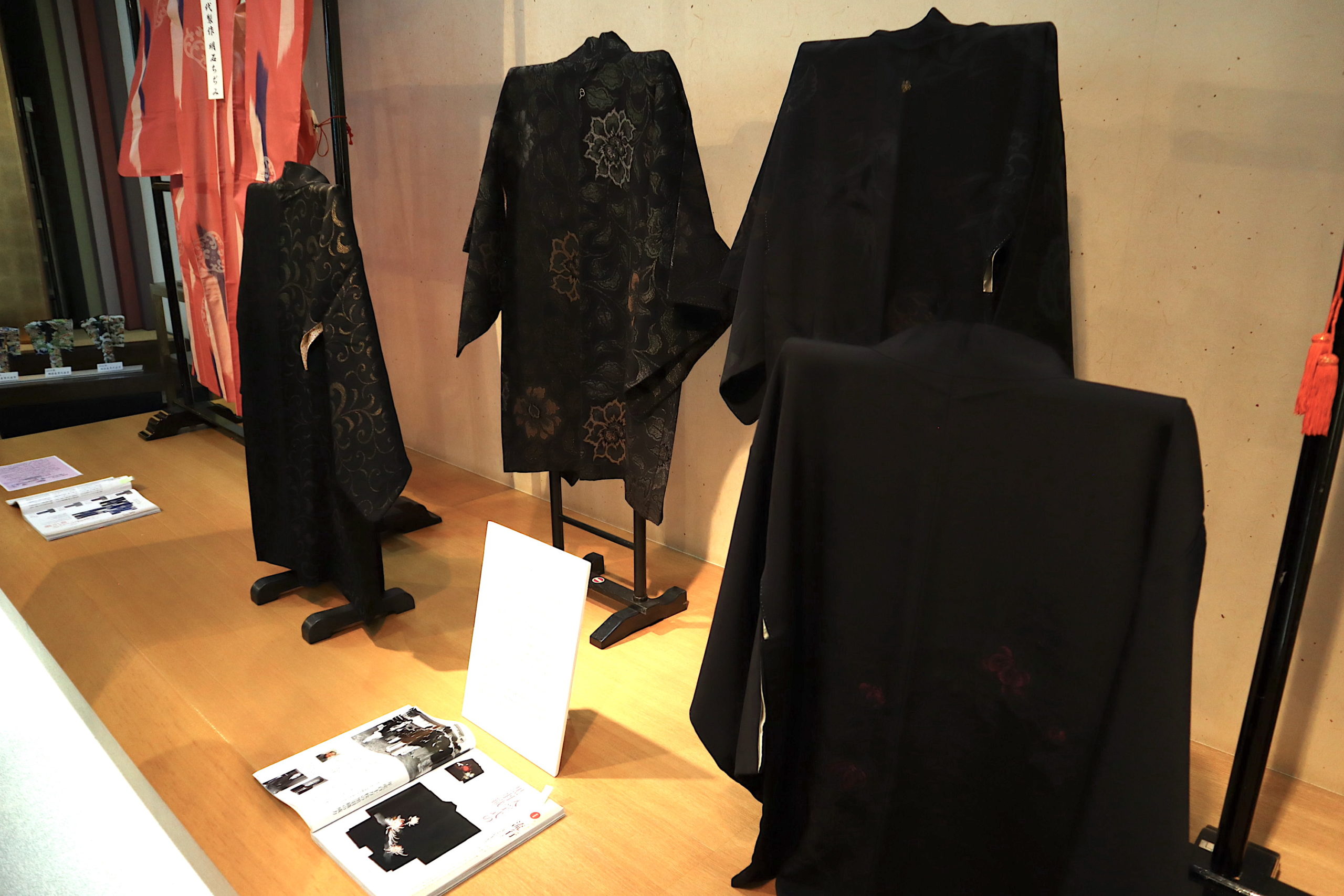
A Relentless Pursuit of Excellence in Both Weaving and Yuzen Dyeing
The 1964 Tokyo Olympics were a symbol of Japan’s postwar economic boom. During the games, a staggering 97.3% of the population tuned in to watch the broadcast. The newly introduced color televisions brought vivid images into households—including the elegant young women in stunning furisode kimono who appeared on the podium during the award ceremonies.
“This is the beginning of a more colorful era,” thought the team at Yoshizawa Orimono. Known until then for their achievements in weaving, they made a bold move in 1965: they ventured into the uncharted world of Yuzen dyeing. Originating in Kyoto during the Edo period, Yuzen is a highly refined dyeing technique that traditionally requires collaboration among specialized artisans for each stage. Starting from scratch—experimenting with dyes and materials through trial and error—Yoshizawa Orimono gradually mastered the delicate aesthetic and began creating Tsukesage and Furisode kimono.
In contrast to Kyoto’s division of labor, Yoshizawa established a vertically integrated production system, much like in their weaving. Every step—design, hand-painting, stencil work, and brush dyeing—is carried out in-house. This unique approach allowed them to build a distinctive aesthetic identity, mastering not just one but two of Japan’s most revered textile traditions.

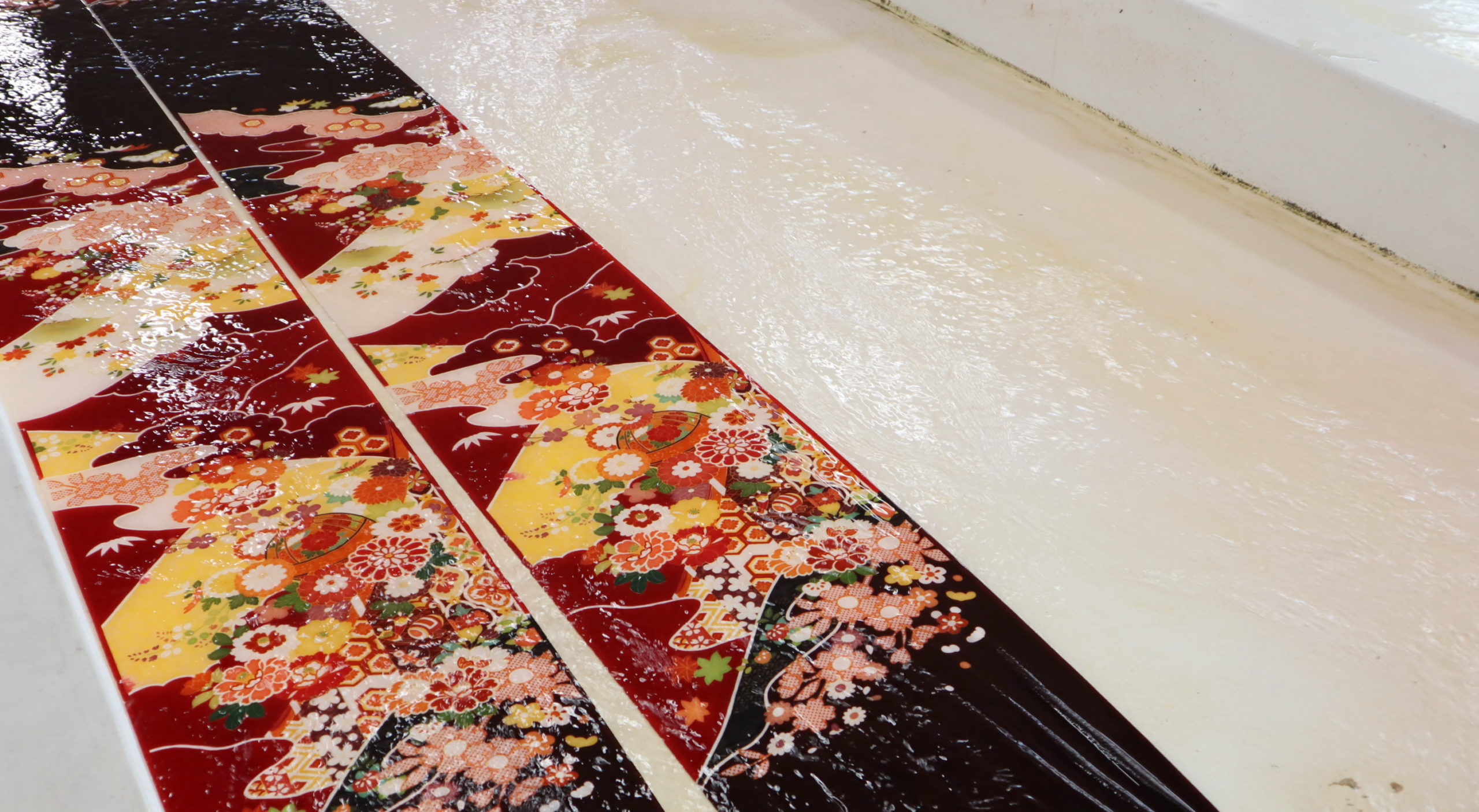
Balancing Tradition and Innovation
Openness to new ideas
At the heart of Yoshizawa Orimono’s philosophy lies Fueki-Ryuko—a principle coined by the haiku master Matsuo Basho. It brings together two seemingly opposing ideas: fueki (the unchanging essence) and ryuko (the ever-changing trends of the times). Honoring tradition while embracing creativity, Yoshizawa Orimono has continued to create refined and timeless Kimono that embody the beauty of classical design with a modern sensibility.
The company also focuses on nurturing the next generation. Today, even artisans in their 30s are active as certified traditional craftspeople for Tokamachi Akashi Chijimi, bringing fresh ideas and energy to their work.
Rooted in the unique climate and history of Tokamachi, Yoshizawa’s weaving tradition and bold foray into Yuzen dyeing continue to flourish. Guided by the spirit of Fueki-Ryuko, their work promises to inspire and delight Kimono enthusiasts for generations to come.

See Also : Exploring Traditional Craftsmanship Vol.1 “Tokamachi-akashi-chijimi”
See Also : The Textile Encyclopedia | Tokamachi Akashi Chijimi (Niigata Prefecture)
See Also : The Textile Encyclopedia | Tokamachi Akashi Chijimi (Niigata Prefecture)
__________________________________
Yoshizawa Orimono Co., Ltd.
686-1 Honcho, Tokamachi-shi, Niigata, Japan
+81-25-752-4131
Official Website>>
__________________________________



















